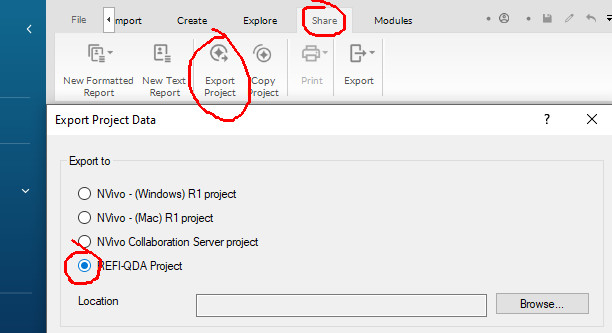
#DEDOOSE VS NVIVO SOFTWARE#
The software allows users to classify, sort and arrange information examine relationships in the data and combine analysis with linking, shaping, searching and modeling. NVivo is intended to help users organize and analyze non-numerical or unstructured data. In 1999, the Richards developed the first version of NVivo and eventually N6 was replaced by NVivo 7. Originally called NUD*IST, it contained tools for fine and detailed analysis of unstructured textual data. The first QSR International software product was developed by Tom and Lyn Richards. NVivo is used predominantly by academic, government, health and commercial researchers across a diverse range of fields, including social sciences such as anthropology, psychology, communication, sociology, as well as fields such as forensics, tourism, criminology and marketing. NVivo helps qualitative researchers to organize, analyze and find insights in unstructured or qualitative data like interviews, open-ended survey responses, journal articles, social media and web content, where deep levels of analysis on small or large volumes of data are required.

So if you have downloaded any of the materials above please email us with your comments.NVivo is a qualitative data analysis (QDA) computer software package produced by QSR International. Indeed, many of the materials we provide are the direct result of repeated requests from students and qualitative researchers. We always welcome feedback concerning the relevance and usefulness of our resources. See also Silver and Lewins (2014, 2nd edition) Using Software in Qualitative Research: A Step-by-Step Guide, Sage Publications, London.
#DEDOOSE VS NVIVO SERIES#
In order to help you decide between software the CAQDAS networking project also provides a series of free software planning seminars where we raise some of the issues you may need to consider, and discuss how some of the software programs differ in the way they handle such aspects.
#DEDOOSE VS NVIVO DOWNLOAD#
We recommend that you also visit the Software Developer websites as part of your decision-making process, where you can access and download demonstration versions. In writing these reviews we aim to address the most frequently asked questions that we at the CAQDAS Networking Project receive.

The Comment section at the end details our opinions on certain aspects of functionality and usability.

Review documents do not provide an exhaustive account of all the features and functions provided by the software but are designed to highlight some of its distinguishing elements. The individual software reviews are intended to be read in conjunction with the ‘choosing a CAQDAS package working paper’ which provides a more general commentary of common CAQDAS functionality. We review both commercially available and free/open source products and aim to raise awareness about the less well-known options as well as the leading packages which are well established in the field. The following reviews provide up-to-date comparative information about selected CAQDAS packages. It is meant to be read ahead of the individual software reviews. It focuses mainly on those traditionally categorised as CAQDAS packages and highlights some key distinguishing elements in order to provide you with an early impression of each package.

If you are new to the area of computer assisted qualitative data analysis (CAQDAS), we recommend you read the choosing a CAQDAS package first.Ĭhoosing a CAQDAS package: overview of common functionality (PDF) provides a summary of the available software as a starting point for thinking about which package may be most suited to the type of project and data you are working with and the way you like to work.


 0 kommentar(er)
0 kommentar(er)
